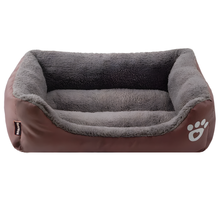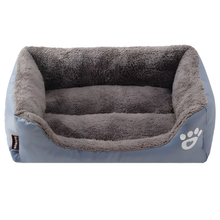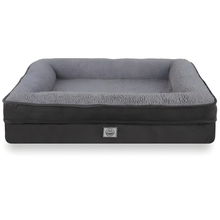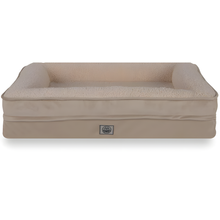What Are the Signs of a Sick Pet?
Understanding the signs of a sick pet such as appetite loss, lethargy, or unusual behavior helps owners act early. Recognizing pet health red flags like vomiting, diarrhea, or skin issues supports timely vet care. For long-term wellness, feeding pets a balanced diet with essential nutrients, proteins, vitamins, and safe foods ensures optimal pet nutrition. Knowing which human foods are safe and which are toxic helps prevent health risks. From the best dog diet to cat nutrition essentials, this guide offers practical tips for feeding pets for overall health, strong immunity, and longer life expectancy.

What Are the Signs of a Sick Pet?
Summary
Pets can’t tell us when they’re unwell, but their body language, behavior, and eating patterns give strong clues. Knowing the early signs of illness helps you act quickly and protect their wellbeing. At the same time, choosing the right diet balanced with nutrients, proteins, and safe ingredients ensures long-term health, vitality, and disease prevention. This guide covers both: how to spot sickness in pets and how to provide optimal nutrition tailored to dogs, cats, and other household companions.
Table of Contents
- Signs of a Sick Pet: What to Watch For
- Behavioral Changes and Warning Signals
- Physical Symptoms and Health Red Flags
- What Should I Feed My Pet for Optimal Health?
- Essential Nutrients Every Pet Needs
- Best Diets for Dogs vs. Cats
- Human Foods That Are Safe or Dangerous
- Practical Feeding Tips for Long-Term Wellness
- Quick Comparison Table
- FAQ: Pet Health & Nutrition
- Signs of a Sick Pet: What to Watch For
Recognizing illness early prevents complications. Even mild changes can signal deeper health issues.

Behavioral Changes and Warning Signals
• Sudden aggression or withdrawal
• Loss of appetite or refusal to eat
• Excessive sleeping or restlessness at night
• Reduced playfulness or lack of interest in activities
Physical Symptoms and Health Red Flags
• Persistent vomiting or diarrhea
• Coughing, sneezing, or nasal discharge
• Weight loss or sudden weight gain
• Skin issues such as rashes, lumps, or excessive scratching
• Bad breath, drooling, or difficulty chewing
What Should I Feed My Pet for Optimal Health?
Nutrition is the foundation of a pet’s overall wellbeing. A balanced diet supports immune function, muscle strength, joint health, and energy.

Essential Nutrients Every Pet Needs
• Protein for growth, muscles, and tissue repair
• Healthy fats for skin, coat, and energy
• Carbohydrates in controlled amounts for energy
• Vitamins and minerals for immune and organ support
• Water as the most overlooked but critical nutrient
Best Diets for Dogs vs. Cats
Dogs thrive on balanced diets with lean meat, vegetables, and grains in moderation
Cats are obligate carnivores and require higher protein, taurine, and fatty acids
Human Foods: Safe vs. Dangerous

Safe in moderation: carrots, blueberries, plain cooked chicken
Dangerous: chocolate, grapes, onions, garlic, alcohol, xylitol
Practical Feeding Tips for Long-Term Wellness
• Stick to a feeding schedule
• Avoid overfeeding and frequent treats
• Choose high-quality, vet-approved food
• Rotate protein sources to prevent sensitivity
• Always provide fresh water
Quick Comparison Table
Aspect: Behavior
Signs of a sick pet → Lethargy, appetite loss, aggression
Optimal feeding → Stable routine, improved energy
Aspect: Physical health
Signs of a sick pet → Vomiting, diarrhea, skin problems
Optimal feeding → Balanced nutrients reduce illness
Aspect: Weight changes
Signs of a sick pet → Unexplained gain or loss
Optimal feeding → Portion control maintains balance
Aspect: Long-term effect
Signs of a sick pet → Higher risk of chronic disease if ignored
Optimal feeding → Stronger immunity and longer life expectancy
FAQ: Pet Health & Nutrition
Q1: How do I know if my pet is sick or just tired?
If lethargy continues for more than 24–48 hours and is paired with appetite loss or other symptoms, consult a vet.
Q2: Can I feed homemade food instead of commercial pet food?
Yes, but recipes must be balanced with the right nutrients. Consult your vet before switching.
Q3: How often should I take my pet for a check-up?
At least once a year for healthy pets. Senior pets may require visits every 6 months.
Q4: Is raw food safe for pets?
It can be, but it carries risks of bacterial contamination. Always discuss raw diets with your vet.
Q5: What’s the most common mistake owners make with feeding?
Overfeeding and giving unsafe human foods like chocolate or grapes.
References (APA 7)
American Veterinary Medical Association. (2023). Pet care and nutrition guidelines. AVMA. https://www.avma.org/resources-tools/pet-owners/petcare
National Research Council. (2021). Nutrient requirements of dogs and cats. National Academies Press.









